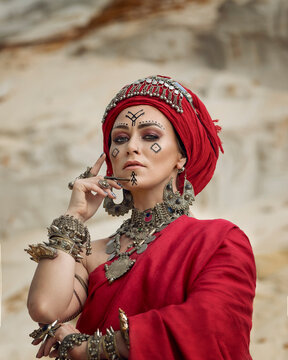The Moroccan Amazighs have an extended and illustrious tradition of creating hand woven carpets and rugs. With one among the most important Amazigh populations, Morocco is today one among the foremost prolific producers of carpets. Each of the forty-five approximately Amazigh tribes scattered throughout the country has its own distinctive design, its own sort of weaving and embroidery and its own art. However, all the carpets of the various tribes share two common characteristics: simplicity of design and richness of color, especially red and saffron.

Traditionally, carpets are woven more for his or her utilitarian use than as decorative pieces. The carpets made by the tribes living within the Atlas Mountains region are thick with an important pile, while those made by the tribes living within the desert are light and flat woven, which means that the character of the climate has an impact on the azetta, the weaving of the region.
The history of Moroccan Amazigh carpets dates back to the Paleolithic, a prehistoric period characterized by the event of the primary tools employed by man.
Traces of Amazigh motifs and tribal symbolism are found in rock art and rock painting dating back several thousand years. within the absence of a written communication , the weavers of antiquity recorded their myths and legends using glyphs and marks inlaid in their carpets and in caves.

Over the centuries, Tamazgha (Amazigh territory) was invaded and colonized by a series of empires that rose and fell over time, including the Romans, Ottomans, Arabs, Spanish, Portuguese and French. None of them managed to go away a more lasting impact than the Arabs, who succeeded in Islamizing the whole region and giving it an Arab identity, by force. However, the Amazighs stubbornly persisted to their age-old and unique culture, mainly because that they had been isolated for thousands of years before the invaders arrived.
The Amazigh carpets of the 20th century have an equivalent transfer of glyphs and marks because the carpets of the distant past. Tribal weavers, who neither possess nor seek formal artistic training, still tell an equivalent stories of yesteryear, passed down from generation to generation. Thus, watching a standard Moroccan Amazigh carpet gives the impression of watching a century-old carpet preserved during a container or an art and history book. this is often their main attraction for Western buyers and collectors of rare pieces.
Moroccan Amazigh carpets of the 20th century still have an equivalent design characterized by distinct knots, but they typically contain small dark flecks on a lighter background. Many of them have a mix of plain colors without pattern.
